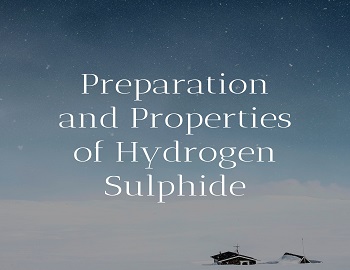Table of Contents
Valence Electrons and Isotopes:
What is Valence Electrons?
The valency, i.e., the combining capacity, of an atom of an element depends on the number of electrons present in its outermost orbit or shell (highest energy level). These electrons are, therefore, often referred to as valence electrons (or valency electrons). The chemical properties of an element depend on the number of valence electrons present in its atom and are more or less independent of the nuclear mass.
What is Isotopes?
It has been found that all the atoms of an element do not have the same masses but they have the same atomic number. Such atoms are called isotopes. Thus, isotopes may be defined as the atoms of the same element which have different atomic masses but the same atomic number. The difference in the atomic masses of the isotopes of an element is due to a different number of neutrons present in their atoms. For example- the number of neutrons present in three isotopes of oxygen, 8O16, 8O17, 8O18, are 8, 9 and 10, respectively. The same atomic number of the isotopes of an element shows that they have a same number of protons and electrons in their atoms. Owing to the same number of electrons and hence identical electronic configurations, the isotopes show identical chemical behaviour.
The isotopes of some elements and the number of protons, neutrons and electrons in their atoms are given in the following table-
| Element | Isotopes | No. of Protons | No. of Neutrons | No. of Electrons |
|---|---|---|---|---|
| Hydrogen | 1H1 1H2 1H3 | 1 1 1 | – 1 2 | 1 1 1 |
| Helium | 2He3 2He4 | 2 2 | 1 2 | 2 2 |
| Carbon | 6C12 6C13 | 6 6 | 6 7 | 6 6 |
| Oxygen | 8O16 8O17 8O18 | 8 8 8 | 8 9 10 | 8 8 8 |
Electronic Configuration of First 20 Elements:
The electronic configuration is the systematic distribution of electrons in various orbits or shells (energy levels) of an atom. To write the electronic configuration of an element, we should know-
- The atomic number which gives the number of electrons in one atom of the element.
- The maximum number of electrons that can be accommodated in a particular shell, which is given by the formula 2n2, where ‘n’ is the number of shells.
The electronic configuration of first 20 elements is given in the following table-
| Name | Symbol | Atomic Number | Number of Electrons | K | L | M | N |
|---|---|---|---|---|---|---|---|
| Hydrogen | H | 1 | 1 | 1 | |||
| Helium | He | 2 | 2 | 2 | |||
| Lithium | Li | 3 | 3 | 2 | 1 | ||
| Beryllium | Be | 4 | 4 | 2 | 2 | ||
| Boron | B | 5 | 5 | 2 | 3 | ||
| Carbon | C | 6 | 6 | 2 | 4 | ||
| Nitrogen | N | 7 | 7 | 2 | 5 | ||
| Oxygen | O | 8 | 8 | 2 | 6 | ||
| Fluorine | F | 9 | 9 | 2 | 7 | ||
| Neon | Ne | 10 | 10 | 2 | 8 | ||
| Sodium | Na | 11 | 11 | 2 | 8 | 1 | |
| Magnesium | Mg | 12 | 12 | 2 | 8 | 2 | |
| Aluminium | Al | 13 | 13 | 2 | 8 | 3 | |
| Silicon | Si | 14 | 14 | 2 | 8 | 4 | |
| Phosphorous | P | 15 | 15 | 2 | 8 | 5 | |
| Sulfur | S | 16 | 16 | 2 | 8 | 6 | |
| Chlorine | Cl | 17 | 17 | 2 | 8 | 7 | |
| Argon | Ar | 18 | 18 | 2 | 8 | 8 | |
| Potassium | K | 19 | 19 | 2 | 8 | 8 | 1 |
| Calcium | Ca | 20 | 20 | 2 | 8 | 8 | 2 |
- Constituents Of Air And Their Uses
- Air Pollution- Causes, Effects, and Control Measures
- Water Pollution- Causes, Effects, and Control Measures
- Solid Waste Management
- Applications Of Laser And Maser
- Uses of Washing Soda, Bleaching Powder, etc.
- Absorption, Transport and Water Loss in Plants– NIOS









Comments (No)